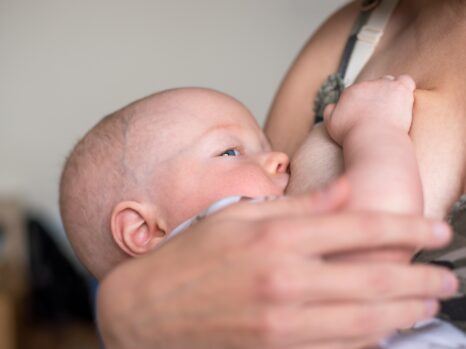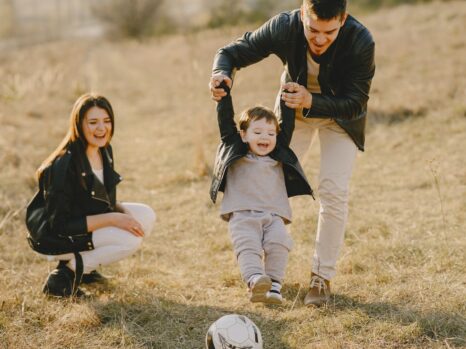She was one of those who felt that “needle-like” pain. Rolling on her bed and squirming in pain, she had no idea what was going on with her!
Jenny had just clocked fifteen and was in the first year of her senior secondary school. Adapting to puberty had been quite tricky and stressful since her mom died. She struggled with fluctuating emotions which she never enjoyed, but this was just a part of it–the peak was yet to come.
Jenny came back from school, feeling funny. She knew something wasn’t right in her body but could not point it out, so she went to bed with the hope of feeling more like her usual self when she wakes up.
Opening her eyes, Jenny looked at the ceiling. It seemed she had no idea why she was on the bed instead of studying on her usual reading chair.
At once, Jenny tried to get up but stopped halfway because of sharp pain on one side of her lower abdomen. “Oh crap, this was why!”, she said.
She placed her back gently on her bed while trying to figure out the cause of this sharp pain that stung her. “Was it something I ate this morning?
Did I get hurt while walking back from school?”. These were the questions that surfed through young Jenny’s mind. She even checked her tummy to see if there was any injury. What an innocent girl! She was clueless.
Still thinking, Jenny laid on her left side. She was determined to find the cause of this pain. She decided to observe if the problem was only in her lower abdomen. Guess what? It wasn’t.
She also had some tenderness in her breast. This was adding up to something, and she was going to find why. She did some research and finally got her answer; OVULATION!
What is Ovulation?
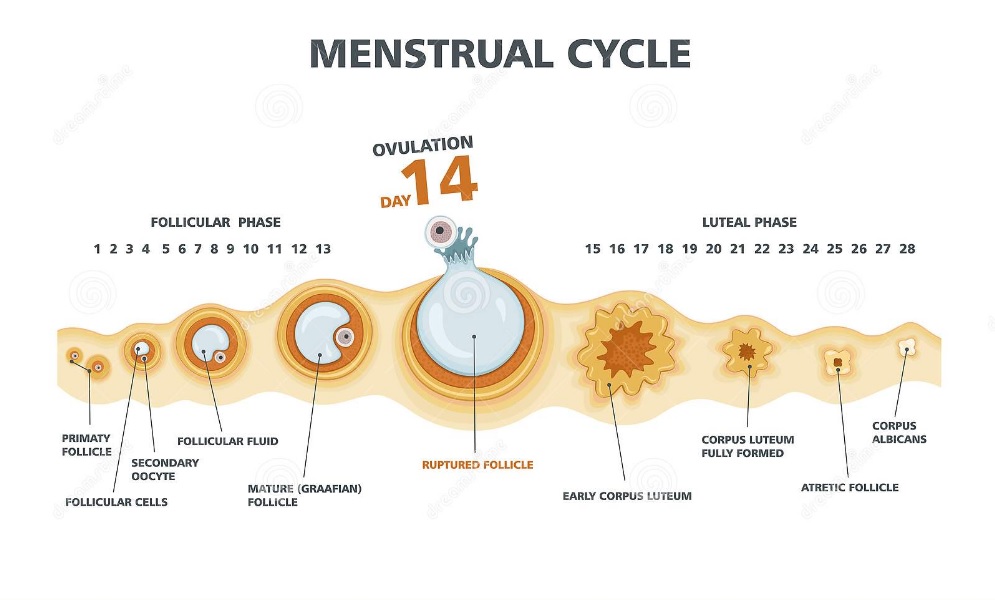
Ovulation is simply the release of ovum/eggs from the ovaries. It is around this time that pregnancy is most likely to occur.
Usually, ovulation occurs around 14 days before the next period, generally in ladies with a 28-day cycle. But with the apparent fact that the body chemistry of women varies, causing a different length in their cycles, the ovulation day is not usually on the 14th-day mark.
Its range is around 11-21 days before the next period, depending on the length of the cycle. Still, if it occurs earlier or later than this, you should not be alarmed because as I mentioned earlier, ovulation day varies.
To get rid of any lingering doubts, you should keep in touch with your gynecologist regularly. You should also note that ovulation happens once a month.
Signs of Ovulation
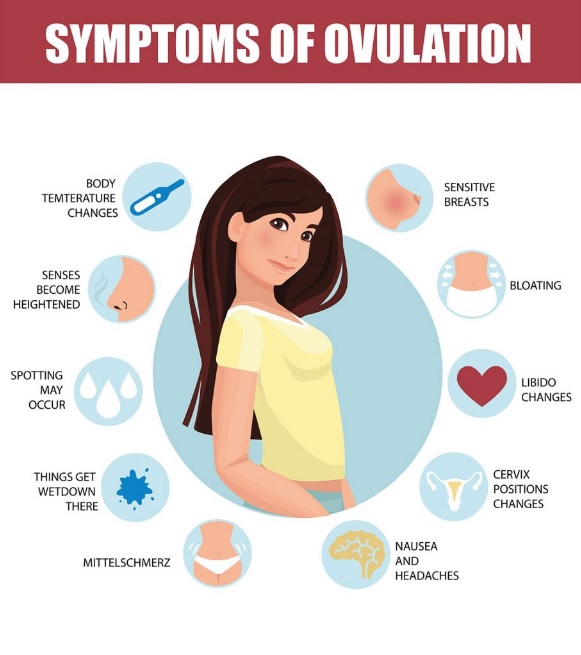
Before we look at the tests, there are some signs of ovulation you should take note of. Just as the rainbow is a sign that accompanies the rain, so also are there signs that accompany ovulation.
Now, let’s look at some primary ovulation symptoms most women experience. These signs would tell you if your ovulation day is approaching, already here, or has passed. Here we go! You would experience some changes in these:
- Basal body temperature.
- Cervical mucus (thinner and clearer).
- Sexual drive.
- Breast tenderness.
- level of luteinizing hormones.
- Abdominal pain (mittelschmerz).
Now to the million-dollar topic, best ovulation test. We would first see the different types of ovulation tests, after which we would point out which one is the best and most preferred.
First of all, what is an ovulation test? How do ovulation tests work? As the name implies, this is a test carried out to confirm if a lady is approaching her ovulation day or is already ovulating.
Different tests can be carried out to verify the ovulation day, of which I would be explaining:
3 Best Method of Ovulation Test
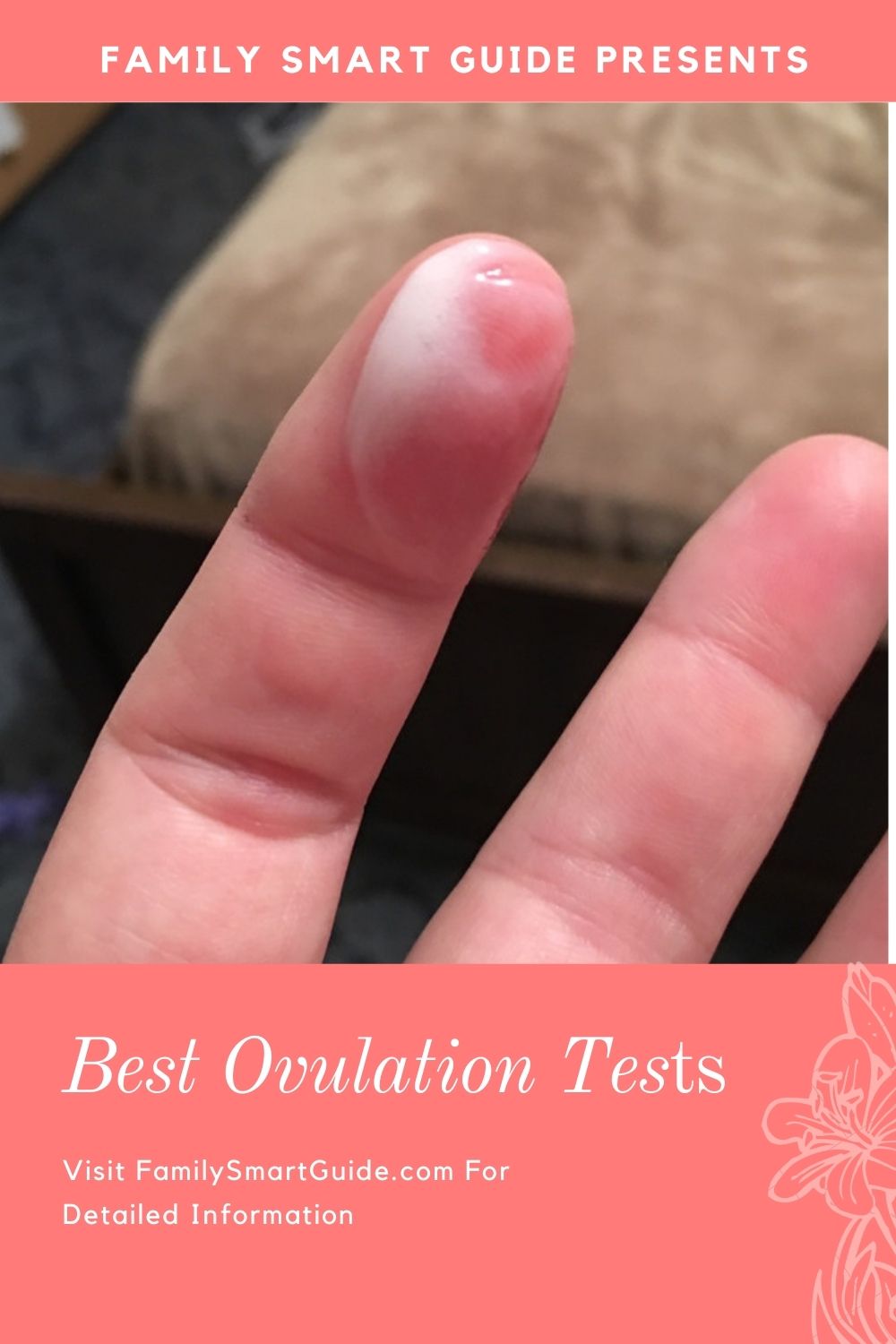
Basal Body Temperature Chart (BBT Chart)
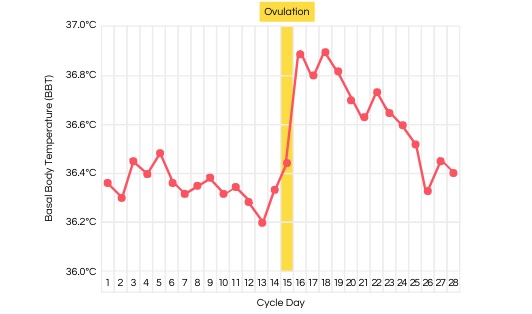
The basal temperature of your body is that temperature at which you are at complete rest. This temperature is best taken in the morning (at the same time each day) before you get up from bed, sit up or go to urinate.
Any slight form of work could affect your basal temperature and in turn, your ovulation test, so it should be recorded correctly.
Also, take note that your sleep should be at least three hours without interruption. The monitoring of this temperature is regarded as one of the simplest ways of detecting ovulation.
A Dutch physician and gynaecologist, Theodoor Hendrik van de Velde, in 1905, noticed some changes and established the connection between body temperature and ovulation.
Before ovulation, a woman’s average basal body temperature ranges between 36.1 degrees Celsius (97℉) and 36.7 degrees Celsius (98℉). It remains this way until approximately one day before ovulation, in which it reaches its lowest point.
This is usually referred to as dip/nadir. After ovulation, the BBT rises once again to a temperature between 36.4 degrees Celsius (97.6℉) and 37 degrees Celsius (98.6℉). Due to the nature of the temperature change (slightly), a special thermometer is required to measure the temperature difference.
This could be a Basal thermometer, a traditional glass thermometer or a digital thermometer. These thermometers measure in tenths of a degree.
Let’s take a look at what the BBT Chart is all about. A BBT Chart is one that shows the slightest fluctuations in your basal body temperature during your cycle over several months.
A steady increase in your BBT shows a positive ovulation test, that is, you have ovulated. You could use a paper chart or a smart thermometer that would provide a chart-type field and record the data as you log it in. Your fertility clinic could also provide one for you.
Plotting or logging in your BBT overtime would create a pattern of increase and decrease that would help you to know when you would ovulate in your next cycle.
With all these, it looks good to go, right? But here’s something you should know. Although it is cheap and straightforward, research has shown that the BBT Chart method has only about 76%-88% accuracy.
This is because other factors could lead to an increase in the basal body temperature apart from ovulation.
These are stress, an illness, alcohol intake and usually almost anything that can alter your sleeping pattern. This is why it is crucial to take a record of your BBT the second you wake up.
Ovulation Test Strip

This is also known as Ovulation Predictor Kits (OPKs). How does it work? The ovulation test strips work based on luteinizing hormonal surges.
The luteinizing hormone, LH, plays a huge role in controlling the functions of the gonads (ovaries and testes in females and males respectively).
A surge/increase (about five times the average amount) in the LH indicates the release of an egg from the ovaries (ovulation).
Be aware that this surge in the luteinizing hormone can be seen in both saliva and urine.
However, a pilot study on the accuracy of ovulation detection has shown that saliva (although with advantages) has a lower accuracy out of the two methods, therefore making the surge in urine more reliable. Hence, the urine method is widely used.
How do you use the test strips?
Most ovulation test kits come with an average of 5 to 10 strips. Since ovulation test strips are based on urine, what you need to do is to pee in a cup and dip a strip into it.
You could also pee on the strip directly. Wait for some minutes for the indicator to appear, then when it shows, you can compare the test line with the control line on the strip.
An indication of approaching ovulation is when the test line is darker than the control line. If it is otherwise, then your ovulation day isn’t near. It would be best if you did this for some days to increase the accuracy of the strips.
To eliminate any doubt, you could as well use a test strip with digital reading. This is even better because it can compare the LH surges of the previous days with that of the current one.
A better way to use the strip to:
- Carry out the test between 11 am and 8 pm.
- Your urine must be concentrated. Try not to drink any liquid two hours before the test as it would dilute your urine, in turn, reducing its accuracy.
Recent studies have shown that the Ovulation Prediction Kit is one of the most accurate ovulation detectors out there. This is because it has an accuracy result of 97%. Although with this result, there is no guarantee that pregnancy would occur.
There is also that 3% chance that it would give a false result, especially for women with Polycystic Ovary Syndrome (PCOS) or those with irregular periods.
Compared to the BBT Chart, the OPKs have higher accuracy. It only needs to be used mid-cycle, rather than the BBT Chart which must be updated daily, thus, making the Ovulation test strips less stressful.
Ovulation Calculator
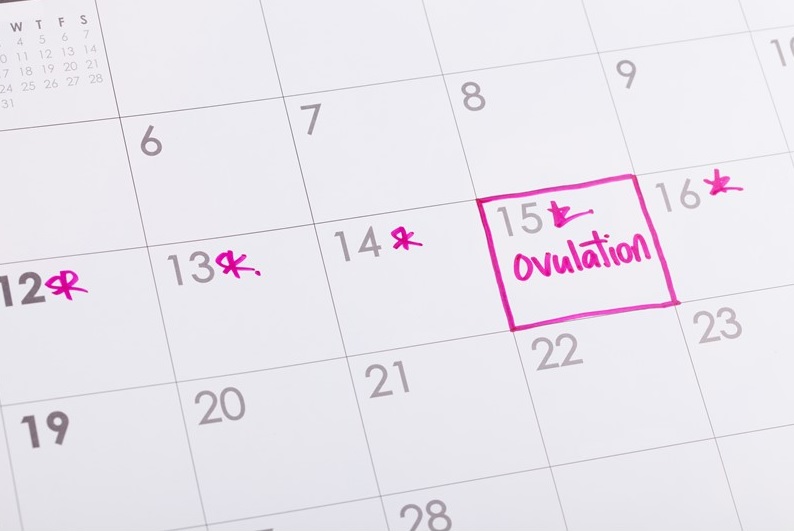
As the name implies, this is a calculator used to keep track of your ovulation day and fertile window, usually over the course of six months. Let’s see how it works. This calculator works based on your menstrual cycle length, with some details recorded in a calculator-type field.
What do you have to do?
- Input the date of the first day of your just concluded period. For instance, if your last menstruation started on 22nd of the month and ended on 26th, then the first day of your last period was on the 22nd.
- The ovulation test calculator would provide different options of average cycle length; select the one that applies to you.
If you are not sure how to do this, calculate the number of days between the first day of a particular previous period to the first day of the next period after that. What do I mean?
Let’s say in August, your period started on the 3rd and in September, your period started on the 5th. This means that the average length of your period cycle is 34 days.
To increase the accuracy of the ovulation calculator, you need to log in these details regularly, for about six months.
However, researches carried out to determine the relationship between periods and stress have shown that period cycles may vary as a result of extreme stress or trauma.
In this case of slightly different length cycle, you can find the average of your cycles and input the result into the calculator, e.g. if for three months, your average cycles are 29, 31 and 33, then the average would be 31 days.
- Click on the ‘Calculate’ button. It would calculate your ovulation day, fertile/ovulation window and also, your next period date. Regular input of your period details would increase the accuracy of the ovulation calculator.
For irregular periods, you might have issues with calculating your ovulation day with this method.
A good suggestion I would give for an ovulation calculator is the FLO period and ovulation tracker. This application is presently used by over 130 million women around the globe. It is used to track period cycle, pre-menstrual symptoms, ovulation day and symptoms, fertile window and pregnancy.
It would also tell when your next period would be. You only need to log in your average menstrual cycle, the first date of your last period regularly, and the possible symptoms you experience during menstruation.
What’s more to this app? It also provides graphs for BBT and ovulation days, reminders for next period and ovulation date, life and fitness tracker, and most importantly, medical and scientific knowledge based on the details you input in the calculator.
I once mentioned some disorders above, one of which is Polycystic Ovarian Syndrome (PCOS). The above tests for ovulation are more suited for women with regular period cycles but not for those with PCOS. Let’s see more on this;
PCOS OVULATION TESTS

Polycystic Ovarian Syndrome, otherwise called PCOS, is a common reproductive health condition that affects the hormonal levels of about 6-8% of women of child-bearing age.
As a result of these hormonal imbalances, women with this syndrome tend to have irregularities in their menstrual cycles.
The hormonal imbalance, as stated here, refers to the unusually high level of luteinizing hormone (LH). Naturally, the level of LH is reduced before ovulation, and it increases during ovulation. In the case of PCOS, since the LH is already unusually high, there is no room for an increase in its level.
This means that ovulation would be affected—there is not always the maturity or release of eggs from the ovaries. Rather than the eggs being released, they are collected on the ovaries as follicles to form a cyst, hence the name, polycystic.
Most ovulation tests work with hormonal changes, making it difficult for women with PCOS to pinpoint their day of ovulation. As a result of this, it is advisable to use non-hormonal ovulation tests to get more accurate results.
Examples of these tests are:
- Basal Body Temperature Chart.
- Cervical mucus check/position.
- Breast tenderness.
Now that you know about the different types of ovulation tests, you might want to know the exact time you should take the test. We would talk about that now.
WHEN TO TAKE OVULATION TEST?
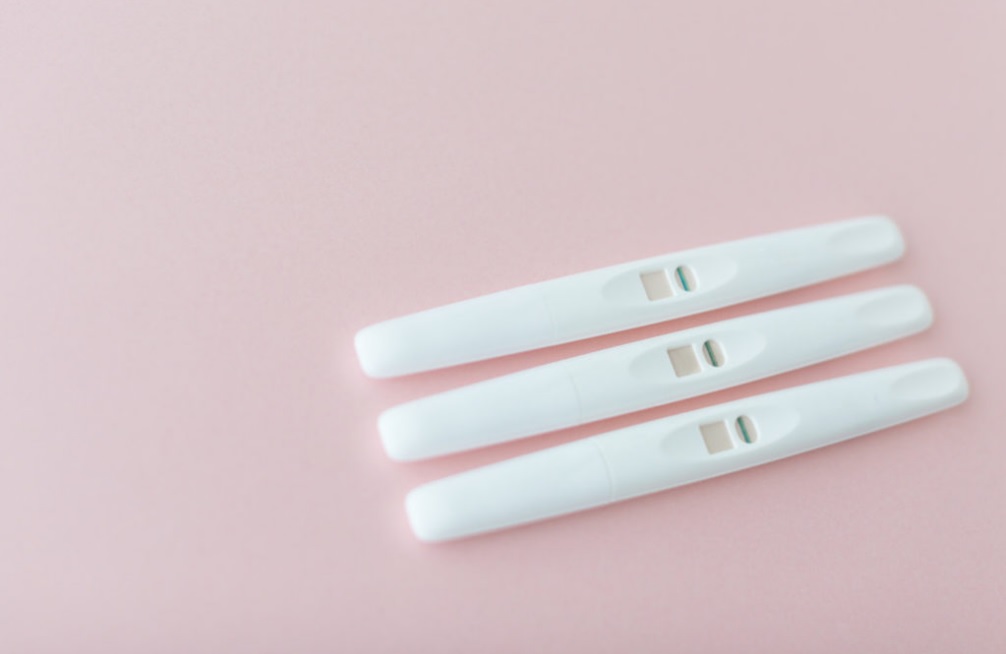
As mentioned earlier, ovulation is needed for pregnancy because it helps to predict the most fertile days of your cycle.
Since your ovulation day is roughly at the middle of your period cycle, the best time to start carrying out the ovulation test is 2 to 4 days before your mid-cycle.
For instance, if your ovulation date is day 14 of your cycle, then your testing should start on day 10 to 12.
These ovulation symptoms are also an indication for when you should start testing for ovulation:
- Mittelschmerz pain.
- Cervical mucus (slippery, thin and egg-white like consistency).
- Increased sexual urges.
- Blood spotting.
And for the question of what time of the day to take the ovulation test; you can do it at any time, morning or night, but I suggest you take it in the morning immediately after you wake up, before doing anything.
This way, there is very little or no form of work or stress. Also, the concentration of your urine is high and can be used to get accurate results. It is perfect for the Basal Body Temperature Charts as well as the ovulation test strip method.
After taking the ovulation tests and it produces a positive result, do you want to know how long they last? Find out!
HOW LONG WILL AN OVULATION TEST STAY POSITIVE?
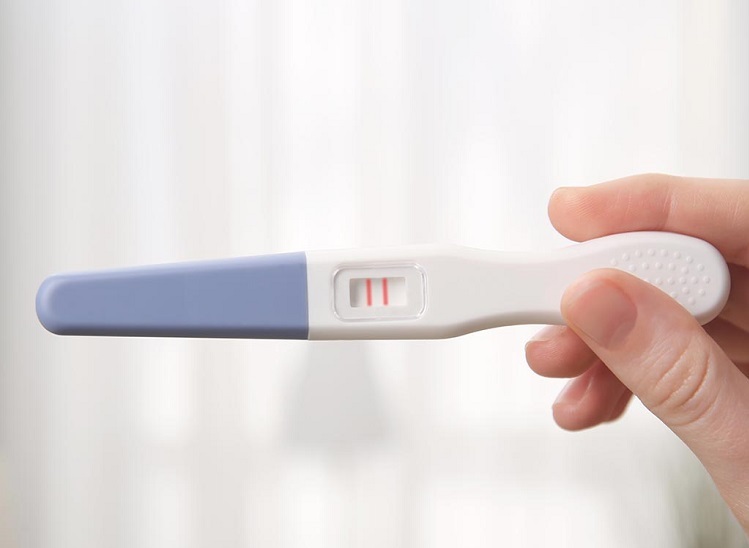
Throughout a woman’s menstrual cycle, the surge of luteinizing hormone in her body is generally low. Roughly mid-way her cycle, there is an increase in the LH levels, which shows that ovulation is just around the corner.
This surge lasts for about two days. A positive ovulation test result means that there is a release of the egg (ovulation) between 24 to 36 hours after this rise in the LH level. After this egg is released, it is viable for only 24 hours.
According to doctor Sonja Kristiansen, a woman’s fertile window is at this time. The fertile window in the menstrual cycle is the time frame in which the tendency to get pregnant is very high. This is usually accompanied by ovulation day.
After this time, the level of luteinizing hormone reduces drastically. This means that after your ovulation and fertile window, the tendency of you having a positive ovulation test result for that month is zero.
There’s a question most women ask. Here it is;
WILL OVULATION TEST BE POSITIVE IF PREGNANT?
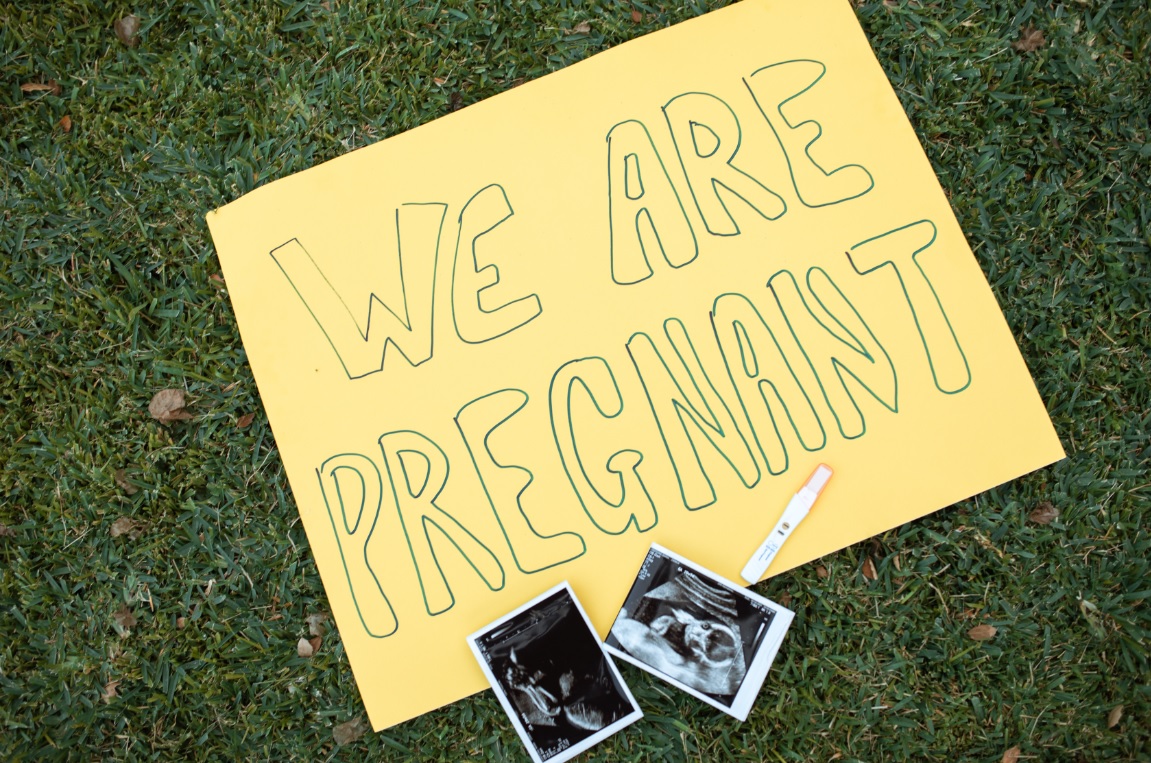
The tests for ovulation and pregnancy involves two hormones with similar molecularity (structure) but different function. These hormones are the luteinizing hormone (for ovulation) and the Human Chorionic Gonadotropin, HCG, for pregnancy.
As a result of the similar molecularity of both hormones, a positive result can be seen when ovulation tests are carried out on a pregnant woman. It could also be a negative result.
This is why it is advisable to use an ovulation test to check for ovulation and a pregnancy test to check for pregnancy, to eliminate any false result.
To add more value to what you have learnt, I would be debunking some ovulation myths which has brought about a lot of misconception in modern-day.
Ovulation Occurs Only on Day 14 of Your Menstrual Cycle
Generally, the average ovulation day is usually between the range of day 11 to day 21 of the menstrual cycle. This is based on the length of the period cycle of each woman.
A lot of emphases has been laid on day 14 as the ovulation day because this is the average benchmark used when taking the length of the cycle as 28 days.
In fact, a study showed that less than 10% of women with a cycle length of 28 days are the only ones with their ovulation date on day 14.
Your Ovaries Alternate When Ovulating
Of course, your ovaries can alternate when ovulating eggs but this is not scheduled. Sometimes, for some months, it could just be one ovary that produces the egg for ovulation, either left or right. This is why you might feel pains in only one side of your abdomen during ovulation.
The whole idea behind this has to do with the ovary that has more matured follicle. The follicle contains the egg.
One month, it could be your left ovary with more follicles and the other month, it could still fall to that same left ovary to produce the egg for ovulation.
You Can’t Conceive If You Do Not Have Sex on Your Ovulation Day
In one of the descriptions above, I described the fertile window. If you do not have sex on your ovulation day, you are still safe as far your fertile window hasn’t ‘closed’. This ranges from 2 to 4 days before ovulation and the 24 hours in which the egg is still viable, on the ovulation day.
Having Sex During Menstruation Reduces Your Chances of Getting Pregnant
Some women feel that the flow of blood during their period would harm their chances of getting pregnant that month. I’m afraid that is not right. The basis for getting pregnant is dependent on your ovulation and not your period itself.
Final Words
Putting all these into consideration, it is certain that you should have explicit knowledge of what ovulation is, the basic tests to check for ovulation, the right tests to use for women with PCOS, when exactly to test for ovulation and of course, the facts regarding ovulation and menstruation. You’re good to go!

